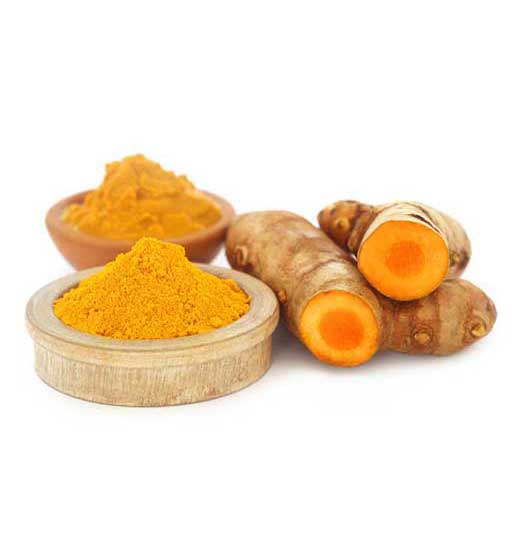
Did You Know?
Curcumin is the main curcuminoid found in the rhizome of Curcuma longa (turmeric) and in other Curcuma spp. along with other curcuminoids like bis-demethoxycurcumin and demethoxycurcumin. Studies have also strongly indicated that curcumin, the active compound in turmeric, is the key ingredient responsible for the major therapeutic activities of turmeric. Curcuma longa possesses antioxidant, anti-inflammatory, antimutagenic, antimicrobial, and anticancer properties. The anti-oxidant property of curcumin is believed to derive from its phenol moiety. Curcumin is known to exert direct antibacterial activity against a wide spectrum of bacteria.Curcumin is a recognized pleiotropic compound with ability to interact with various pro-inflammatory molecules secreted during inflammation process.
Whats unique?
Approximately 2%–6% (w/w) of turmeric is curcuminoids. The latter contains 80% curcumin, 18% demethoxycurcumin, and 2% bisdemethoxycurcumin.
Tales of the Past
The discovery of curcumin dates to around two centuries ago when Vogel and Pelletier reported the isolation of “yellow coloring-matter” from the rhizomes of Curcuma longa (turmeric) and named it curcumin. Later, this substance was found to be a mixture of resin and turmeric oil. In 1842, Vogel Jr. obtained a pure preparation of curcumin but did not report its formula. In the decades that followed, several chemists reported possible structures of curcumin. However, it was not until 1910 that Milobedzka and Lampe identified the chemical structure of curcumin as diferuloylmethane. Further work by the same group in 1913 resulted in the synthesis of the compound. Subsequently, Srinivasan separated and quantified the components of curcumin by chromatography.
Application in Different Health Categories
Cardiovascular Health, Liver Health, Skin Health, Brain Health, Gastric Health, Immune System, Anti-Cancer, etc
Regulatory Status
FSSAI, FDA, Health Canada, EFSA, FSANZ approved
Different Dosage Formats
Capsules, powders, tablets, ointments, energy drinks, soaps, cosmetics, etc
References
1.Susan J. Hewlings and Douglas S. Kalman.Curcumin: A Review of Its’ Effects on Human Health.Foods. 2017 Oct; 6(10): 92.
2.Wing-Hin Lee, Ching-Yee Loo,Mary Bebawy, Frederick Luk, Rebecca S Mason and Ramin Rohanizadeh. Curcumin and its Derivatives: Their Application in Neuropharmacology and Neuroscience in the 21st Century.Curr Neuropharmacol. 2013 Jul; 11(4): 338–378.
3.Subash C. Gupta, Sridevi Patchva, and Bharat B. Aggarwal.Therapeutic Roles of Curcumin: Lessons Learned from Clinical Trials.AAPS J. 2013 Jan; 15(1): 195–218.